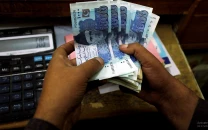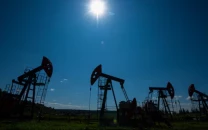Lower fertiliser output may force govt to import 200,000 tons
Total fertiliser off-take; output from projects, decreased by 4 per cent in the first four months of 2010.

Farmers will be looking to purchase fertiliser soon as procurement for the Rabi season starts next month in June.
Fertiliser utilisation is cyclic and purchasing remains low from April to May as procurement for the Kharif season generally finishes during the first quarter and procurement for the Rabi season kicks off in June.
Fertiliser prices increased due to increases in production costs with the gas cut for the sector. The problem has escalated, according to analysts.
Urea prices have increased again and currently stand at Rs855 per bag or $203 per ton, though this is still at a steep discount of 44 per cent to the landed import cost of $360 per ton.
This price hike could be a major factor affecting the project output in the coming months especially in May when the fertiliser off-take is relatively slow.
“To cover up the production losses the government may have to import 150,000 to 200,000 tons of urea in the coming months,” said JS Global Capital analysts. They added that “this would be the equivalent of a Rs1 billion per month subsidy.”
The government has announced that they will end gas curtailment by July 31 this year upon which the fertiliser manufacturers have agreed to lower the prices back to Rs780 per bag once the normal gas supply is restored.
Urea off-take down 5% YoY during 4M2010
Urea output has been significantly affected by the increase in its prices; it went down by 5 per cent to 1.87 million tons in the first four months of 2010 as compared to the same period last year.
Urea prices had been increased by 13 per cent, to Rs780 per bag, for this period as compared to the same period last year.
The gas curtailment issue has led the prices to further increase and currently stands at Rs855 per bag or $203 per ton which is still at a steep discount of 44 per cent to the landed import cost of $360 per ton.
Diammonium Phosphate
Project output declined less than expected even though Diammonium Phosphate (DAP) prices had increased significantly to Rs2,550 per bag.
DAP output from projects for the first four months of 2010 declined by a mere 3 per cent to 232,000 tons as compared to 239,000 tons in the same period last year.
Output from projects was down by a significant 55 per cent though April remains a dull period and that should be taken into consideration.
Analysts at JS Global Capital expect DAP off-take to pick up its pace from June onwards as the procurement for the Rabi season kicks in.
“Our anticipation of The Government of Punjab is expected to keep support prices at their current levels in the upcoming budget further,” said JS Global Capital analyst, Bilal Qamar. He added that “Moreover, as the Phosacid [Phosphoric Acid] prices are locked in till June 2010, we do not see any price changes in DAP.”
Published in the Express Tribune, May 29th, 2010.

1728020501-0/Express-Tribune-Web-(13)1728020501-0-208x130.webp)

















COMMENTS
Comments are moderated and generally will be posted if they are on-topic and not abusive.
For more information, please see our Comments FAQ